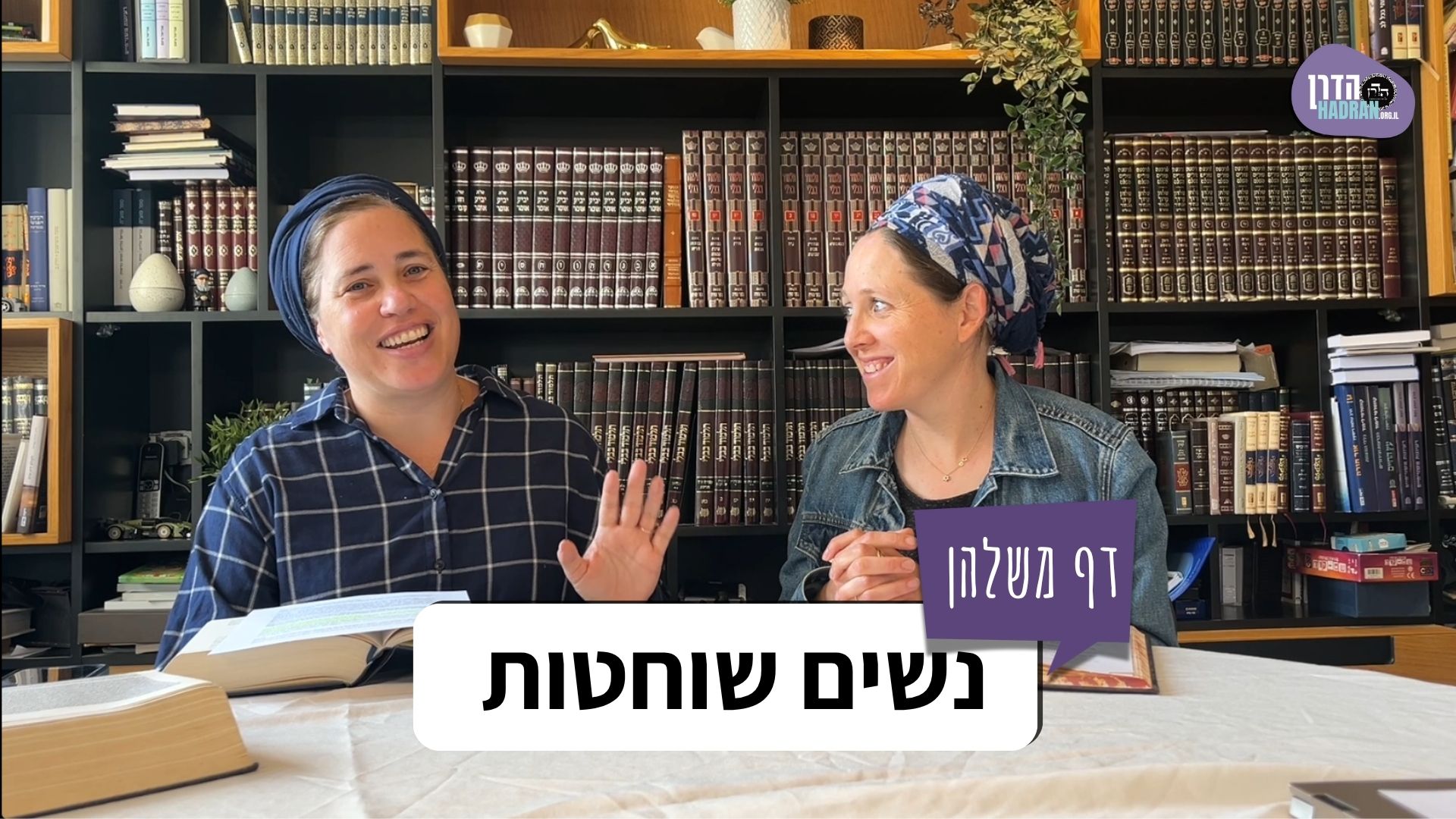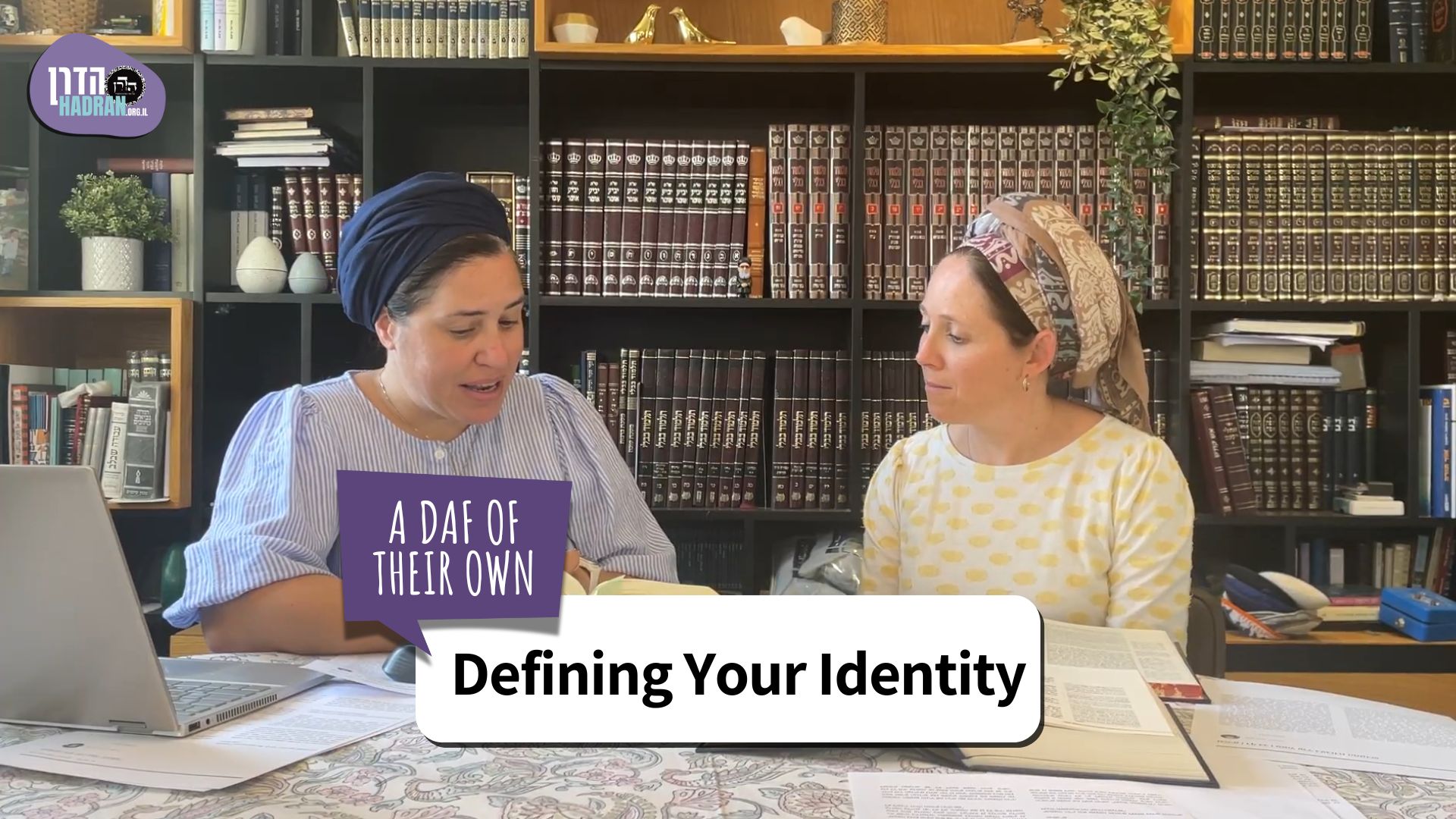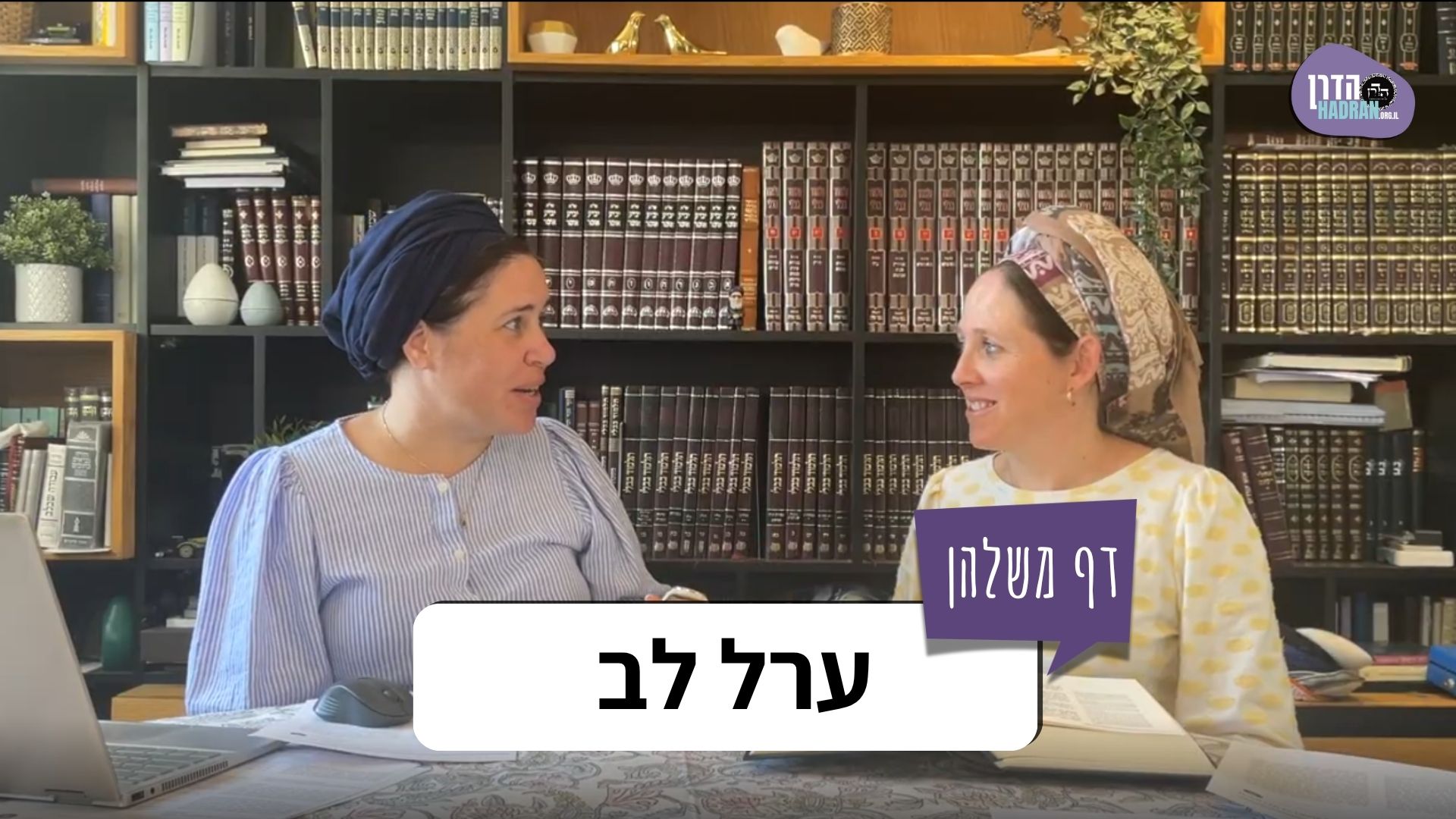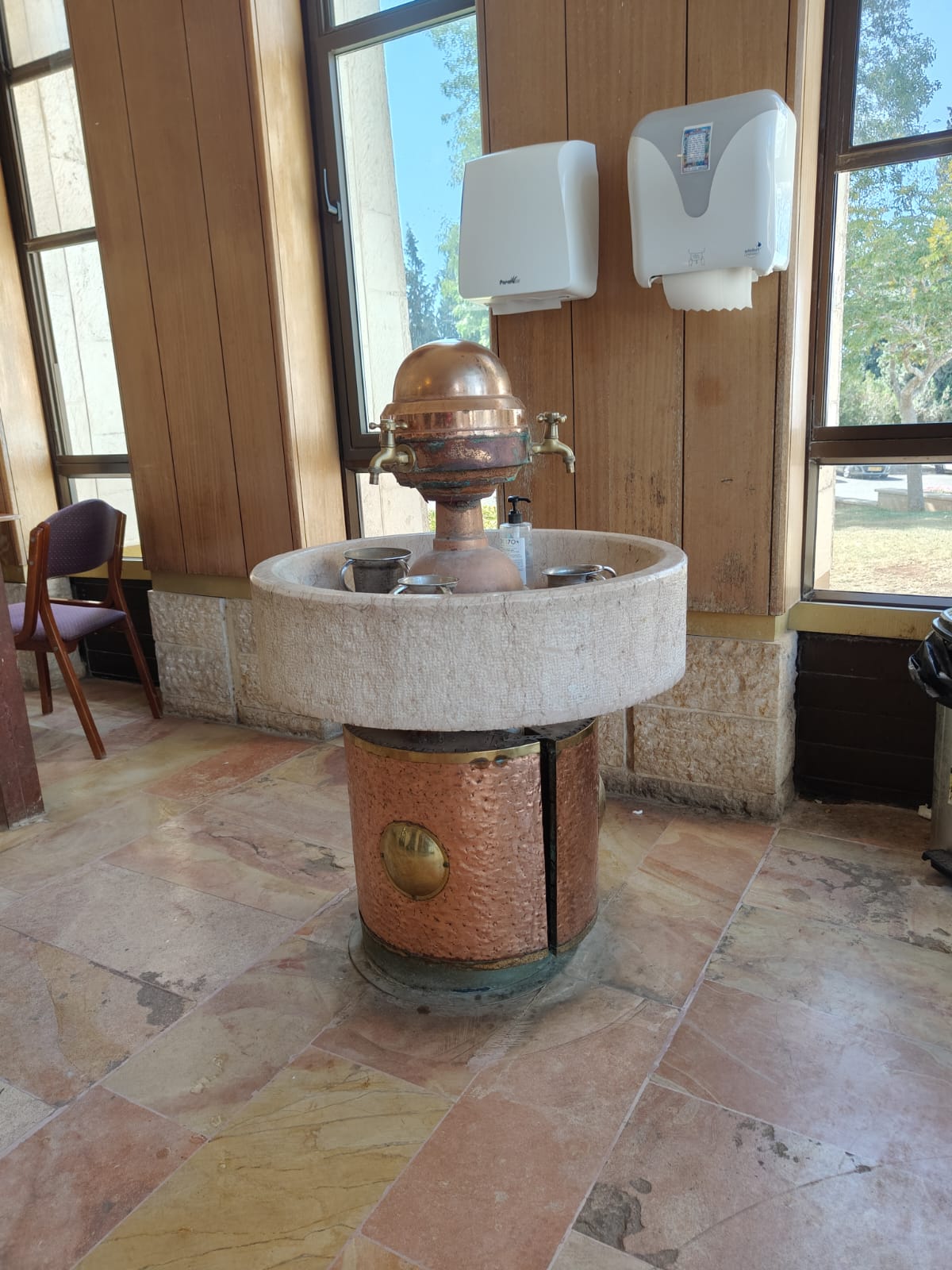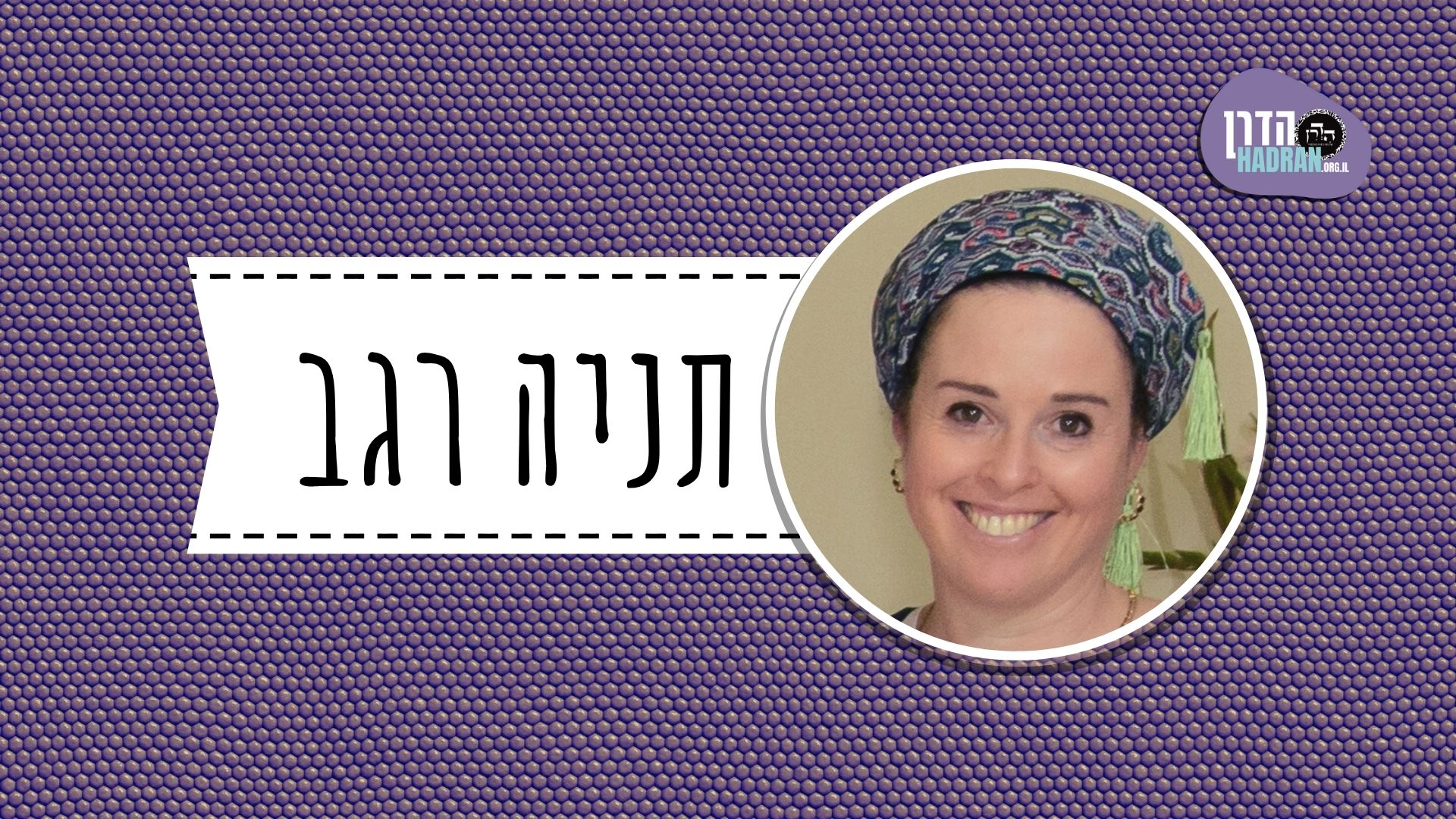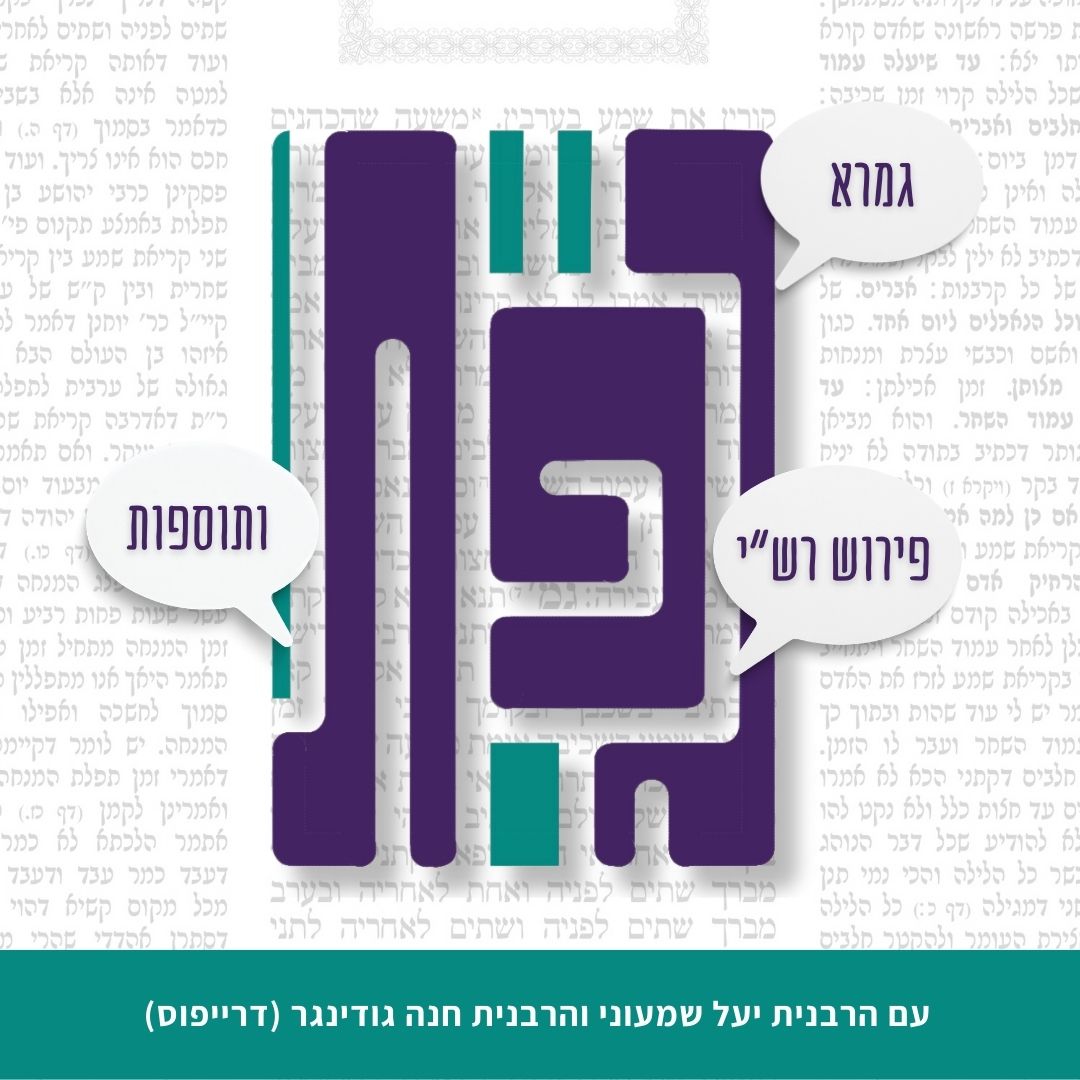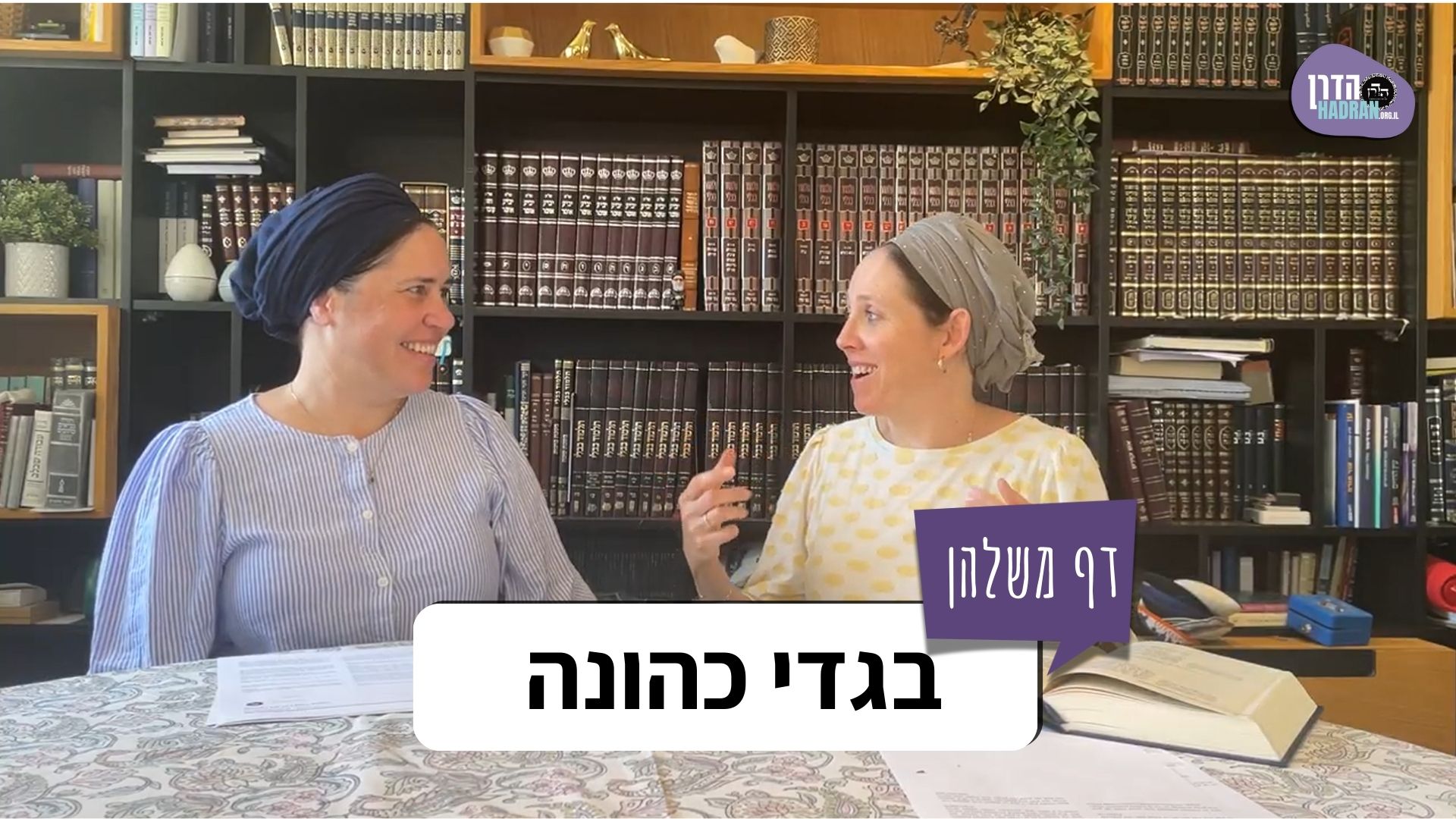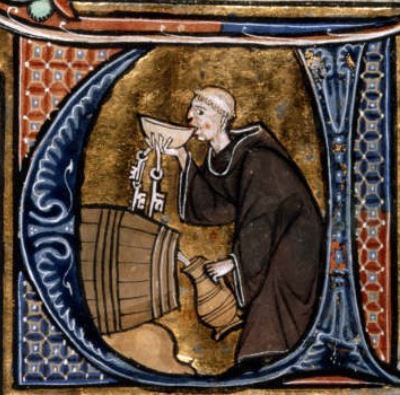Zevachim 26
Share this shiur:
This month’s learning is sponsored by Beth Balkany in honor of their granddaughter, Devorah Chana Serach Eichel. “May she grow up to be a lifelong learner.”
Masechet Zevachim
Masechet Zevachim is sponsored by Esther Kremer in loving memory of her father, Manny Gross on his third yahrzeit. “He exemplified a path of holiness and purity, living with kedushah in his everyday life.”
Want to dedicate learning? Get started here:

Summary
Seder Kodashim Kit – Bookmark Order Form
If one leg of the animal was outside the azara at the time of slaughter or blood collection, does that disqualify the animal and on what does the ruling depend?
If the meat of an animal with a lower level of sanctity leaves the azara before the blood is sprinkled, is the sacrifice disqualified?
Shmuel’s father poses several questions to Shmuel about whether the animal, the slaughterer, or the kohen who received blood that was suspended in the air would invalidate the sacrifice.
When the blood was placed in the wrong location on the altar or on the wrong altar, the Mishna rules that it is disqualified. Shmuel reads this to mean the blood is accepted and the owner receives atonement while the meat itself is disqualified.
A Mishna in Zevachim 32 is cited to raise an apparent contradiction with Shmuel, which is subsequently resolved.
This month’s learning is sponsored by Beth Balkany in honor of their granddaughter, Devorah Chana Serach Eichel. “May she grow up to be a lifelong learner.”
Masechet Zevachim
Masechet Zevachim is sponsored by Esther Kremer in loving memory of her father, Manny Gross on his third yahrzeit. “He exemplified a path of holiness and purity, living with kedushah in his everyday life.”
Today’s daf is sponsored by Miriam Benson in loving memory of her mother Evelyn Benson, Yocheved bat Avram Leib v’Chaya Batya on her first yahrzeit. “To honor her memory, accentuate the Positive, eliminate the negative, get vaccinated, support Israel, go see Downton Abbey – the Grand Finale. And of course – study Torah.”
Delve Deeper
Broaden your understanding of the topics on this daf with classes and podcasts from top women Talmud scholars.
New to Talmud?
Check out our resources designed to help you navigate a page of Talmud – and study at the pace, level and style that fits you.
The Hadran Women’s Tapestry
Meet the diverse women learning Gemara at Hadran and hear their stories.
Zevachim 26
שָׁחַט וְאַחַר כָּךְ חָתַךְ – פְּסוּלָה.
But if he slaughtered the animal and thereafter severed its legs, the offering is disqualified because some of the blood collected is from the legs, which are outside the courtyard.
חָתַךְ וְאַחַר כָּךְ שָׁחַט – כְּשֵׁרָה?! בַּעַל מוּם קָא מַקְרִיב! אֶלָּא אֵימָא: חָתַךְ וְאַחַר כָּךְ קִיבֵּל – כְּשֵׁרָה, קִיבֵּל וְאַחַר כָּךְ חָתַךְ – פְּסוּלָה.
The Gemara asks: If he severed its legs and thereafter slaughtered it, is the offering fit? But isn’t he sacrificing a blemished animal? Rather, say: If one slaughtered the animal while it stood wholly in the courtyard, and afterward its legs moved beyond the edge of the courtyard, and then he severed its legs and thereafter collected the blood, the offering is fit. But if he collected the blood and thereafter severed the animal’s legs, the offering is disqualified, since the blood from the legs is mixed with the other blood of the animal.
חָתַךְ וְאַחַר כָּךְ קִיבֵּל – כְּשֵׁרָה?! וְהָא אָמַר רַבִּי זֵירָא: הַצּוֹרֵם אֹזֶן בִּבְכוֹר, וְאַחַר כָּךְ קִיבֵּל דָּמוֹ – פָּסוּל; שֶׁנֶּאֱמַר: ״וְלָקַח מִדַּם הַפָּר״ – פַּר שֶׁהָיָה כְּבָר!
The Gemara challenges: If he severed its legs and thereafter collected the blood, is the offering fit? But doesn’t Rabbi Zeira say: If one slits the ear of a firstborn animal with the knife after slaughter, creating a blemish, and thereafter collected its blood from the neck, the offering is disqualified, as it is stated: “And the anointed priest shall take from the blood of the bull” (Leviticus 4:5)? The verse indicates that the bull must be at the time of collection of the blood as it already was before slaughter, without a blemish.
אָמַר רַב חִסְדָּא אָמַר אֲבִימִי: חוֹתֵךְ בָּאֵבָר עַד שֶׁמַּגִּיעַ לָעֶצֶם.
Rav Ḥisda says that Avimi says: Rabbi Ami is not referring to a case where one severs the entire leg. Rather, one cuts the flesh of the limb until he reaches the bone, leaving the bone intact. This is not considered a blemish, and the animal remains fit for sacrifice.
קִיבֵּל וְאַחַר כָּךְ חָתַךְ – פְּסוּלָה. שָׁמְעַתְּ מִינַּהּ: דָּם הַמּוּבְלָע בָּאֵבָרִים – דָּם הוּא?
The Gemara suggests: Given that if he collected the blood and thereafter severed the animal’s legs, the offering is disqualified, perhaps you can conclude from it that blood absorbed in the limbs of an animal is considered blood, such that it disqualifies the offering because this blood left the Temple courtyard.
דִּלְמָא מִשּׁוּם שַׁמְנוּנִית.
The Gemara responds: Perhaps the offering is disqualified because of the animal’s fat that is mixed with the blood in the legs. This is considered to be like meat of the offering that has left the Temple courtyard, which also disqualifies the offering.
שָׁמְעַתְּ מִינַּהּ: בְּשַׂר קָדָשִׁים קַלִּים שֶׁיָּצָא לִפְנֵי זְרִיקַת דָּם – פָּסוּל?
The Gemara suggests: If so, perhaps you can conclude another halakha from it: In the case of meat of offerings of lesser sanctity that left the Temple courtyard before the sprinkling of the blood, the offering is disqualified, even though the meat of such offerings may be eaten outside the Temple after the blood has been sprinkled.
דִּלְמָא בְּקׇדְשֵׁי קָדָשִׁים.
The Gemara responds: Perhaps the halakha was stated only with regard to offerings of the most sacred order, whose meat must be eaten inside the Temple courtyard. It proves nothing about offerings of lesser sanctity.
תָּנוּ רַבָּנַן: קׇדְשֵׁי קָדָשִׁים – שְׁחִיטָתָן בַּצָּפוֹן, וְקִבּוּל דָּמָן בִּכְלִי שָׁרֵת בַּצָּפוֹן. עָמַד בַּדָּרוֹם, וְהוֹשִׁיט יָדוֹ לַצָּפוֹן וְשָׁחַט – שְׁחִיטָתוֹ כְּשֵׁרָה. קִיבֵּל – קַבָּלָתוֹ פְּסוּלָה. הִכְנִיס רֹאשׁוֹ וְרוּבּוֹ – כְּאִילּוּ נִכְנַס כּוּלּוֹ. פִּרְכְּסָה וְיָצְתָה לַדָּרוֹם וְחָזְרָה – כְּשֵׁרָה.
The Gemara suggests: Come and hear a proof from that which the Sages taught in a baraita: With regard to offerings of the most sacred order, their slaughter is in the north of the Temple courtyard, and collection of their blood in a service vessel is in the north. If one stood in the south and extended his hand into the north and slaughtered the offering there, his slaughter is valid. If he collected the blood in a similar manner, his collection is not valid. If he inserted his head and most of his body into the north of the courtyard and collected the blood there, it is as if his entire body entered the north. If he slaughtered the animal and it then convulsed and left the north to the south and then returned to the north, it remains fit.
קָדָשִׁים קַלִּים – שְׁחִיטָתָן בִּפְנִים, וְקִיבּוּל דָּמָן בִּכְלִי שָׁרֵת בִּפְנִים. עָמַד בַּחוּץ, וְהִכְנִיס יָדוֹ לִפְנִים וְשָׁחַט – שְׁחִיטָתוֹ כְּשֵׁרָה. קִיבֵּל – קַבָּלָתוֹ פְּסוּלָה; וְהִכְנִיס רֹאשׁוֹ וְרוּבּוֹ – כְּאִילּוּ לֹא נִכְנַס. פִּרְכְּסָה וְיָצְתָה לַחוּץ וְחָזְרָה – פְּסוּלָה. שְׁמַע מִינַּהּ: בְּשַׂר קָדָשִׁים קַלִּים שֶׁיָּצָא לִפְנֵי זְרִיקַת דָּמִים – פְּסוּלִים!
The baraita continues: With regard to offerings of lesser sanctity, their slaughter is anywhere inside the Temple courtyard, and collection of their blood in a service vessel is anywhere inside the Temple courtyard. If one stood outside and inserted his hand into the courtyard and slaughtered the offering there, his slaughter is valid. If he collected the blood in a similar manner, his collection is not valid. And if he inserted his head and most of his body into the courtyard and collected the blood, it is as if he had not entered it at all. If he slaughtered the animal and it then convulsed and left to the outside of the courtyard and returned, it is disqualified. The Gemara infers: Conclude from this baraita that in cases of meat of offerings of lesser sanctity that left the Temple courtyard before the sprinkling of the blood, the offerings are disqualified.
דִּילְמָא בְּאַלְיָה וְיוֹתֶרֶת הַכָּבֵד וּשְׁתֵּי כְלָיוֹת.
The Gemara responds: Perhaps the baraita is referring to the tail, the diaphragm, and the two kidneys of offerings of lesser sanctity, which are all burned on the altar. Since these portions are never meant to leave the Temple courtyard, they are disqualified if they leave even momentarily. It may still be that the remaining meat of such offerings is not disqualified.
בְּעָא מִינֵּיהּ אֲבוּהּ דִּשְׁמוּאֵל מִשְּׁמוּאֵל: הִיא בִּפְנִים וְרַגְלֶיהָ בַּחוּץ, מַהוּ?
§ Shmuel’s father raised a dilemma before Shmuel: If the offering was standing inside the Temple courtyard and its legs were outside, what is the halakha? May one slaughter it?
אֲמַר לֵיהּ: כְּתִיב ״וֶהֱבִיאוּם לַה׳״ – עַד שֶׁתְּהֵא כּוּלָּהּ לִפְנִים.
Shmuel said to him: It is written: “That they may bring them to the Lord” (Leviticus 17:5), indicating that the offering may not be slaughtered unless all of it is inside.
תָּלָה וְשָׁחַט, מַהוּ? אֲמַר לֵיהּ: כְּשֵׁרָה. אֲמַר לֵיהּ: אִישְׁתַּבַּשְׁתְּ; בָּעֵינַן שְׁחִיטָה עַל יָרֵךְ, וְלֵיכָּא.
His father asked him further: If one suspended the animal in the air and slaughtered it, what is the halakha? Shmuel said to him: It is valid. His father said to him: You are mistaken. We require that the slaughter occur on the side of the altar (see Leviticus 1:11), and this is not considered to fulfill that requirement.
נִתְלָה וְשָׁחַט, מַהוּ? אֲמַר לֵיהּ: פְּסוּלָה. אֲמַר לֵיהּ: אִישְׁתַּבַּשְׁתְּ; שְׁחִיטָה עַל יָרֵךְ, וְלֹא שׁוֹחֵט עַל יָרֵךְ.
His father asked him further: If the one slaughtering the animal was suspended in the air and slaughtered the offering while it was on the ground, what is the halakha? Shmuel said to him: It is not valid. His father said to him: You are mistaken. We require only that the slaughter occur on the side of the altar, but not that the one who slaughters be on the side of the altar.
נִתְלָה וְקִבֵּל, מַהוּ? אֲמַר לֵיהּ: כְּשֵׁרָה. אֲמַר לֵיהּ: אִישְׁתַּבַּשְׁתְּ; אֵין דֶּרֶךְ שֵׁירוּת בְּכָךְ.
His father asked him further: If the priest was suspended in the air and collected the blood of the offering in that position, what is the halakha? Shmuel said to him: It is valid. His father said to him: You are mistaken. This is not a normal manner of ministration.
תָּלָה וְקִיבֵּל, מַהוּ? אֲמַר לֵיהּ: פְּסוּלָה. אֲמַר לֵיהּ: אִישְׁתַּבַּשְׁתְּ; שְׁחִיטָה עַל יָרֵךְ, וְלֹא קַבָּלָה עַל יָרֵךְ.
His father asked him further: If the priest suspended the offering in the air after slaughter and collected its blood, what is the halakha? Shmuel said to him: It is not valid. His father said to him: You are mistaken. We require only that the slaughter occur on the side of the altar, but not that collection of the blood occur on the side of the altar.
אָמַר אַבָּיֵי: בְּקׇדְשֵׁי קָדָשִׁים – כּוּלָּן פְּסוּלוֹת, בַּר מִנִּתְלָה וְשָׁחַט. בְּקָדָשִׁים קַלִּים – כּוּלָּן כְּשֵׁרוֹת, בַּר מִן נִתְלָה וְקִיבֵּל.
Abaye said: With regard to offerings of the most sacred order, in all of those cases the offerings are disqualified, except for the case where one was suspended in the air and slaughtered the animal. With regard to offerings of lesser sanctity, in all of those cases the offerings are fit, except for the case where the priest was suspended in the air and collected the blood.
אָמַר רָבָא: מַאי שְׁנָא תָּלָה וְקִיבֵּל בְּקָדָשִׁים קַלִּים – דִּכְשֵׁרָה, דַּאֲוִיר פְּנִים כִּפְנִים דָּמֵי? בְּקׇדְשֵׁי קָדָשִׁים נָמֵי – אֲוִיר צָפוֹן כְּצָפוֹן דָּמֵי!
Rava said: What is different about a case where one suspended the animal and collected the blood of an offering of lesser sanctity, such that the offering is fit? Perhaps it is because the air inside the Temple courtyard is considered to be inside the courtyard for purposes of the service. But if so, then with regard to offerings of the most sacred order as well, let one say that air in the north of the Temple courtyard is considered to be in the north for purposes of the service.
אֶלָּא אָמַר רָבָא: בֵּין בְּקׇדְשֵׁי קָדָשִׁים בֵּין בְּקָדָשִׁים קַלִּים – כְּשֵׁרוֹת; בַּר מִן תָּלָה וְשָׁחַט – בְּקׇדְשֵׁי קָדָשִׁים, נִתְלָה וְקִיבֵּל – בֵּין בְּקׇדְשֵׁי קָדָשִׁים בֵּין בְּקָדָשִׁים קַלִּים.
Rather, Rava says: Both with regard to offerings of the most sacred order and with regard to offerings of lesser sanctity, they are fit in all of those cases except where one suspended the animal and slaughtered it in the case of offerings of the most sacred order, because the Torah mandates that such offerings be slaughtered on the side of the altar. And the offerings are also disqualified where the priest was suspended in the air and collected the blood, both with regard to offerings of the most sacred order and with regard to offerings of lesser sanctity, since this is not a normal manner of ministration.
בְּעָא מִינֵּיהּ רַבִּי יִרְמְיָה מֵרַבִּי זֵירָא: הוּא בִּפְנִים וְצִיצִיתוֹ בַּחוּץ, מַהוּ? אֲמַר לֵיהּ: לָאו אָמְרַתְּ ״וֶהֱבִיאוּם לַה׳״ – עַד שֶׁתָּבֹא כּוּלָּהּ לִפְנִים? הָכָא נָמֵי, ״בְּבוֹאָם אֶל אֹהֶל מוֹעֵד״ – עַד שֶׁיָּבֹא כּוּלּוֹ לְאֹהֶל מוֹעֵד.
Rabbi Yirmeya raised a dilemma before Rabbi Zeira: If the priest was inside and his fringes, i.e., his hair, were outside, and he collected the blood, what is the halakha? Rabbi Zeira said to him: Did you not say that the verse: “That they may bring them to the Lord” (Leviticus 17:5), indicates that an offering may not be slaughtered unless all of it comes inside? Here, too, the verse states with regard to the priests: “When they go into the Tent of Meeting” (Exodus 28:43), indicating that the priest may not perform rites unless all of him comes into the Tent of Meeting.
מַתְנִי׳ נְתָנוֹ עַל גַּבֵּי הַכֶּבֶשׁ; שֶׁלֹּא כְּנֶגֶד הַיְסוֹד; נָתַן אֶת הַנִּיתָּנִין לְמַטָּה לְמַעְלָה; וְאֶת הַנִּיתָּנִין לְמַעְלָה לְמַטָּה; וְאֶת הַנִּיתָּנִין בִּפְנִים בַּחוּץ; וְאֶת הַנִּיתָּנִין בַּחוּץ בִּפְנִים – פָּסוּל, וְאֵין בּוֹ כָּרֵת.
MISHNA: If the priest placed the blood upon the ramp leading up to the altar, or if he placed it on the wall of the altar in an area that is not opposite the base of the altar, i.e., in those parts of the altar where there is no foundation; or if he placed the blood that is to be placed below the red line that runs along the middle of the altar, e.g., the blood of a burnt offering, above the red line, or if he placed the blood that is to be placed above the red line, e.g., the blood of a sin offering, below the red line; or if he placed the blood that is to be placed inside the Sanctuary, i.e., on the golden altar or in the Holy of Holies, outside the Sanctuary on the external altar, or if he placed the blood that is to be placed outside the Sanctuary inside the Sanctuary, in all these cases the offering is disqualified. Nevertheless, there is no liability for karet for one who partakes of these offerings.
גְּמָ׳ אָמַר שְׁמוּאֵל: פָּסוּל בָּשָׂר, אֲבָל בְּעָלִים נִתְכַּפְּרוּ. מַאי טַעְמָא? דְּאָמַר קְרָא: ״וַאֲנִי נְתַתִּיו לָכֶם עַל הַמִּזְבֵּחַ לְכַפֵּר״ – כֵּיוָן שֶׁהִגִּיעַ דָּם לַמִּזְבֵּחַ, נִתְכַּפְּרוּ בְּעָלִים.
GEMARA: Shmuel says: When the mishna states that the offering is disqualified, it means that the meat is unfit for consumption. But the owner of the offering has achieved atonement through it. What is the reason for this? It is as the verse states with regard to the blood: “And I have given it to you upon the altar to atone for your souls” (Leviticus 17:11), from which it is derived that once the blood reaches any location on the altar, the owner of the offering has achieved atonement.
אִי הָכִי, בָּשָׂר נָמֵי! אָמַר קְרָא: ״לְכַפֵּר״ – לְכַפָּרָה נְתַתִּיו, וְלֹא לְדָבָר אַחֵר.
The Gemara challenges: If so, the meat should be fit for consumption as well. The Gemara responds: The verse states “to atone,” emphasizing that I have given it to you for atonement and for nothing else, e.g., consumption of the meat.
אַלְמָא קָסָבַר: שֶׁלֹּא בִּמְקוֹמוֹ – כִּמְקוֹמוֹ דָּמֵי. תְּנַן בְּאִידַּךְ פִּירְקִין: נְתָנוֹ עַל הַכֶּבֶשׁ שֶׁלֹּא כְּנֶגֶד הַיְסוֹד; נָתַן אֶת הַנִּיתָּנִין לְמַטָּה לְמַעְלָה; וְאֶת הַנִּיתָּנִין לְמַעְלָה לְמַטָּה; וְאֶת הַנִּיתָּנִין בִּפְנִים בַּחוּץ; וְאֶת הַנִּיתָּנִין בַּחוּץ בִּפְנִים – אִם יֵשׁ דַּם הַנֶּפֶשׁ, יַחְזוֹר הַכָּשֵׁר וִיקַבֵּל.
The Gemara notes: Apparently, Shmuel holds that blood sprinkled not in its proper place is considered as though it were sprinkled in its proper place. But we learned in a mishna in another chapter (32a): If an unfit person placed the blood upon the ramp, or on the wall of the altar that is not opposite the base of the altar; or if he placed the blood that is to be placed below the red line above the red line, or if he placed the blood that is to be placed above the red line below the red line; or if he placed the blood that is to be placed inside the Sanctuary outside the Sanctuary or the blood that is to be placed outside the Sanctuary inside the Sanctuary, then if there is blood of the soul that remains in the animal, the priest fit for Temple service should collect the blood again and sprinkle it on the altar.
וְאִי סָלְקָא דַעְתָּךְ שֶׁלֹּא בִּמְקוֹמוֹ כִּמְקוֹמוֹ, לְמָה לִי יַחְזוֹר הַכָּשֵׁר וִיקַבֵּל? וְכִי תֵּימָא לְהַתִּיר בָּשָׂר בַּאֲכִילָה – מִי אִיכָּא זְרִיקָה דְּלָא מְכַפְּרָא, וְשָׁרְיָא בָּשָׂר בַּאֲכִילָה?!
The Gemara continues: And if it would enter your mind to say that blood sprinkled not in its proper place is considered as though it were sprinkled in its proper place, why do I need the fit priest to collect the blood again and sprinkle it? And if you would say that although the first sprinkling already effected atonement, the second sprinkling is necessary to permit the meat of the offering for consumption, is there such a concept as a sprinkling that does not itself effect atonement and yet permits the meat for consumption? Rather, one must conclude that the first sprinkling did not effect atonement at all, since it was not sprinkled in its proper place.
אִי דְּיַהֲבֵיהּ כָּשֵׁר – הָכִי נָמֵי; הָכָא בְּמַאי עָסְקִינַן – דְּיַהֲבֵיהּ פָּסוּל.
The Gemara responds: If a fit priest had initially placed the blood improperly, the sprinkling would indeed have effected atonement after the fact and there would not be another sprinkling. But here we are dealing with a case where an unfit person placed the blood, so that it did not effect atonement at all.
וְלִיהְוֵי דָּחוּי! דִּתְנַן: וְכוּלָּן שֶׁקִּיבְּלוּ חוּץ לִזְמַנּוֹ וְחוּץ לִמְקוֹמוֹ – אִם יֵשׁ דַּם הַנֶּפֶשׁ, יַחְזוֹר הַכָּשֵׁר וִיקַבֵּל. קִיבְּלוּ אִין, זָרְקוּ לָא; מַאי טַעְמָא? לָאו מִשּׁוּם דְּהָוֵי דָּחוּי?
The Gemara asks: But if the mishna is dealing with a case where an unfit person placed the blood initially, then the offering should be rejected permanently, as we learned in the same mishna: And with regard to all unfit people who collected the blood with the intent to offer it beyond its designated time or outside its designated area, if there is blood of the soul that remains in the animal, the priest fit for Temple service should collect the blood again and sprinkle it on the altar. Since the mishna states this halakha only with regard to collection of the blood, one can infer that specifically if an unfit person collected the blood with improper intent, a fit priest can indeed collect the blood again, but if they sprinkled the blood with improper intent he cannot. What is the reason for this? Is it not because the offering is rejected permanently when an unfit person sprinkles its blood?
לָא; מִשּׁוּם דִּפְסִיל בְּמַחְשָׁבָה.
The Gemara responds: No, the offering is rejected because it is disqualified by the improper intent of the person sprinkling the blood, not because that person is unfit.
אִי הָכִי, קַבָּלָה נָמֵי! וְעוֹד, מִי פָּסְלָה מַחְשָׁבָה?! וְהָאָמַר רָבָא: אֵין מַחְשָׁבָה מוֹעֶלֶת אֶלָּא בְּמִי שֶׁרָאוּי לַעֲבוֹדָה, וּבְדָבָר הָרָאוּי לַעֲבוֹדָה, וּבְמָקוֹם הָרָאוּי לָעֲבוֹדָה!
The Gemara challenges: If so, then improper intent with regard to collection of the blood should disqualify the offering as well. And furthermore, does intent disqualify offerings in such cases? But doesn’t Rava say: Intent is effective to disqualify an offering only when it is expressed by one who is fit for the Temple service, and with regard to an item that is fit for the Temple service, and in a place that is fit for the Temple service? Here, the one collecting the blood is unfit.
לָא תֵּימָא: זָרְקוּ לָא, אֶלָּא אֵימָא: שָׁחֲטוּ לָא.
The Gemara responds: Do not say that one infers from the mishna that if an unfit person sprinkled the blood with improper intent a fit priest cannot collect it again. Rather, say that one infers that if an unfit person slaughtered the offering with improper intent the mistake cannot be rectified. Slaughter is valid if performed by one unfit for the Temple service, and therefore an unfit person’s improper intent is effective to disqualify the offering. By contrast, collection and sprinkling of the blood must be performed by a fit priest. Consequently, an unfit person’s intent with regard to those rites does not disqualify the offering.
מַאי קָא מַשְׁמַע לַן – דְּפָסְלָה מַחְשָׁבָה? תְּנֵינָא: לְפִיכָךְ הֵן פּוֹסְלִין בְּמַחְשָׁבָה!
The Gemara asks: According to this interpretation, what is the mishna teaching us? Can it mean to teach only that improper intent by an unfit person during slaughter disqualifies the offering? We already learn this in the same mishna (31b), which states: With regard to all those who are unfit for Temple service who slaughtered an offering, their slaughter is valid, and therefore, these unfit people disqualify the offering with improper intent.
הָא קָא מַשְׁמַע לַן – דְּמִקַּבָּלָה וְאֵילָךְ לָא פָּסְלָה מַחְשָׁבָה. מַאי טַעְמָא? כִּדְרָבָא.
The Gemara responds: This is what the mishna teaches us: That one who is unfit can disqualify the offering only during its slaughter, but from the rite of collection of the blood onward the intent of an unfit person does not disqualify the offering. What is the reason for this? It is like that which Rava says: Intent is effective to disqualify an offering only when expressed by one who is fit for the service in question.
מֵיתִיבִי: חִישֵּׁב לִיתֵּן אֶת הַנִּיתָּנִין לְמַעְלָה לְמַטָּה; לְמַטָּה לְמַעְלָה – לְאַלְתַּר כָּשֵׁר (לְמָחָר פָּסוּל). חָזַר וְחִישֵּׁב
The Gemara raises an objection from a baraita: If one slaughtered an offering and had intent to place the blood that is to be placed above the red line below the red line, or to place the blood that is to be placed below the red line above the red line, and he had intent to do so immediately, i.e., on the same day, the offering remains fit. Therefore, if he subsequently had intent when performing the other rites



